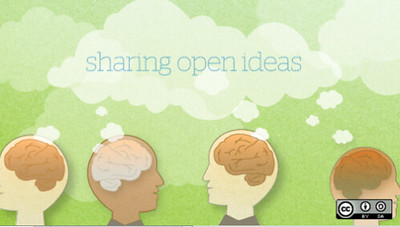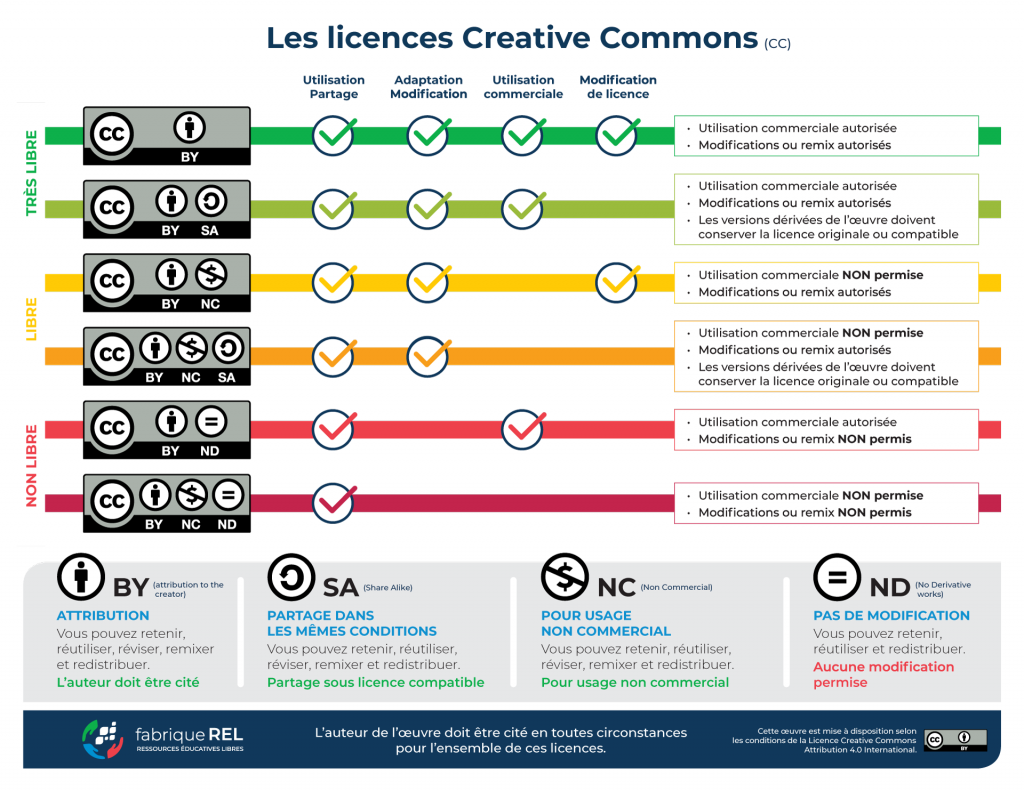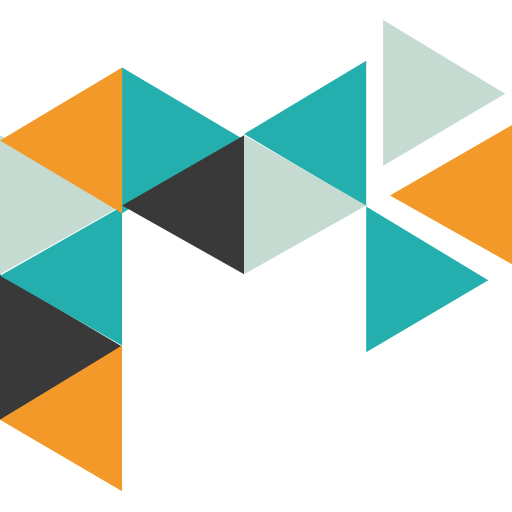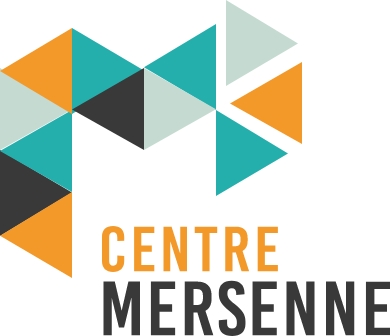What is a Creative Commons licence?
Under French law, “l’auteur d’une œuvre de l’esprit jouit sur cette œuvre, du seul fait de sa création, d’un droit de propriété incorporelle exclusif et opposable à tous”, that’s to say : the author of a work of the mind enjoys, by the sole fact of its creation, an exclusive intangible property right enforceable against all. The creator of a work of the mind enjoys moral rights: respect for the author’s name, his work, disclosure of the work, withdrawal of the work, etc. The right of authorship, i.e. respect for the author’s name, is a “perpetual, inalienable and imprescriptible” right. The author also benefits from economic rights: exploitation rights, representation rights, reproduction rights, etc. The economic rights can be transferred to third parties.

Creative Commons licences, or CC licences, do not replace copyright law. They specify, in a simple manner, the permissions granted by the author. They set the conditions and limits for the use of the work.
For example, an author uploads an image under the CC-BY-NC (Attribution, for non-commercial use) licence. Anyone wishing to reuse this image knows that they can modify it, that commercial use is forbidden and that the creator must be cited, without having to contact the creator to ask permission to use the image. By imposing the citation of the author’s name, the licence preserves the author’s moral rights.
The choice of a Creative Commons license is final. Thus, as the CoopIST website explains : « Une fois que vous avez attribué une licence Creative Commons à une œuvre, quiconque en prend connaissance peut s’en prévaloir pour réutiliser votre œuvre. Si vous décidez de changer de licence Creative Commons ou de cesser la diffusion de votre œuvre sous licence Creative Commons, cela ne s’appliquera pas aux exemplaires déjà en circulation, ni aux adaptations de votre œuvre déjà réalisées, qui pourront continuer à être diffusés et réutilisés aux conditions de la licence que vous aviez choisie ».
How to assign a Creative Commons license?
Creation
The easiest way to create the appropriate licence for your work is to use the licence selector. Simply enter the desired characteristics and the selector automatically creates the license. It is advisable to fill in the “Help others attribute you!” form, which allows you to add a name, a title of the work, links, etc. This allows the person who will be re-using the work to cite his or her sources correctly, without any attribution errors.
Quote
To properly cite a Creative Commons license, you must indicate :
- the title
- the author
- the source
- the Creative Commons license
The Creative Commons website gives a very clear example of citation in the “How to give attribution” section.
For example:

Specific examples of attribution according to the context of re-use, including modification of the work, are provided on the Creative Commons wiki.
Why use a Creative Commons license?
Specify the conditions for sharing a work
Creative Commons licences simplify the distribution and sharing of intellectual works. The Coopist website points out that, by using a Creative Commons licence on their work, authors can :
- to share their work and facilitate its use by others;
- authorise its reproduction and distribution free of charge under certain conditions;
- granting users rights in addition to the copyright that applies by default.

Making the work visible in open access databases
The HTML code generated by the licence selector is machine-readable, and therefore search engine friendly. It is also possible to add metadata: title of the work, url, format of the work, name of the author, etc. The Creative Commons site explains how its licences work:
The public copyright licences are designed in an innovative “three-layer” way. Each licence starts as a traditional legal tool, in the kind of language and text format that most lawyers use and enjoy. Creative Commons call it the Legal Code layer of each licence.
But since most creators, educators and researchers are not lawyers, Creative Commons also offer the licences in a format that is accessible to everyone – the Explanatory Summary, also known as the ‘human readable’ version. By summarising and explaining the main provisions and conditions of the licences, it is a practical reference for rights holders and users of works. Think of the Explanatory Summary as an easy-to-use interface below the Legal Code, although it is not a licence and its content is not part of the Legal Code.
The final layer of the licence recognises that software, from search engines to office software to music publishers, plays a huge role in the creation, copying, retrieval and dissemination of works. In order for the internet to identify a Creative Commons licensed work, they provide a “machine-readable” version of the licenses – a summary of permissions and obligations written in a language that software, search engines, and other types of technology can understand.

This makes it easy for search engines to identify CC licensed works and reference them. For example, Google offers to refine its image search by selecting only Creative Commons licences.
Plan S compliant

Plan S is an initiative to promote open access scientific publishing. Plan S calls for that “With effect from 2021, all scholarly publications on the results from research funded by public or private grants provided by national, regional and international research councils and funding bodies, must be published in Open Access Journals, on Open Access Platforms, or made immediately available through Open Access Repositories without embargo.”
Plan S encourages authors to publish under an open licence, preferably CC-BY, to meet the requirements of the Berlin Declaration on Open Access to Knowledge in the Sciences and Humanities published in 2003.
Activism for open science
Publishing under a Creative Commons licence is also a strong gesture in favour of open access. In December 2022, the CNRS committed to a no-licensing strategy and encourages the use of the CC-BY 4.0 license.
The various Creative Commons licences
Applying a CC licence to one’s production does not mean that the work will be open access. Indeed, there are different levels of restrictions depending on the licence chosen.
Thus, to be in line with Plan S, authors must use a free license: CC-BY, CC-BY-SA et CC0 (public domain).



